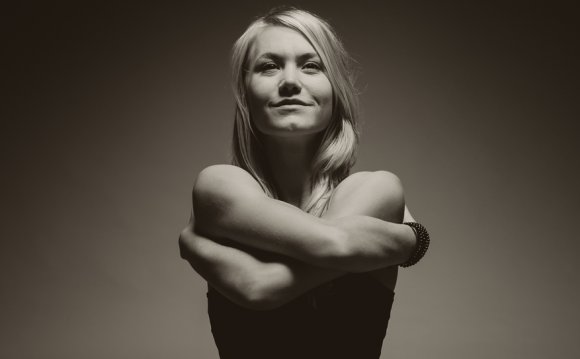
While it’s not a cure for cancer, yoga enhances physical and emotional wellness and brings a peace many patients had thought they’d lost forever.
Fog softens the contours of the laurel tree, the white trunks of birches, the spiky holly tree that stands at the entrance to the Holly Tree Inn where the Ting-Sha Cancer Retreat is held. It’s 5 p.m., and the participants make their way from the hot tub and massage room, or from the art studio, or from the trail next to the stream that winds through the woods, across the lawn to the yellow-frame bed and breakfast. We are not the usual guests, vacationers come to savor the peace and pleasure of this spot an hour’s drive north of San Francisco.
We arrive at the house and enter the large ground-floor room: nine women and men, aged 30 to 75, one of us from as far away as Memphis. We enter quietly and arrange ourselves for meditation. Some of us, needing to lean, place pillows behind our backs and under our knees, and wrap ourselves in blankets.
Seated facing us is a narrow-bodied, tall woman with large eyes radiating kindness behind her glasses. Virginia Veach, our yoga instructor, is the director of the Ting-Sha Institute, the retreat’s sponsor.
“It’s in these moments of silence or relaxation that healing occurs, ” Virgina tells us. “Yoga, meditation, and relaxation are ways to quiet our minds. Relaxation is a state of openness and readiness. It is neither tension nor flaccidity, but availability for movement.”
As we rise to begin the yoga postures, I glance at the other participants. Lois, a redhead in her early 30s and mother of two children, struggles with a rare form of leukemia. Eileen, a musician, holds herself carefully, mindful of the cancer in her spine. Three of the women have had breast cancer: Lucy, a commanding woman from the deep South; Janet from San Francisco, who has masses of thick hair and a whimsical, determined attitude that serves her well in her wholly alternative care for her cancer; and Ann, a slender, charming psychotherapist and mother of grown sons, who moves slowly, debilitated by the chemotherapy she has just received. Arnold, our oldest, most enthusiastically vigorous and life-affirming member, slips on his artificial leg, the result of an inebriated motorcycle ride many years ago. Now he faces bone metastasis from his prostate cancer. Ruth and Jake, a young married couple, are learning how to deal with her lymphoma and preparing for a bone marrow transplant. And I, a survivor of colon cancer, am seeking to put my life back together and understand what happened to me.
Virginia guides us in a standing posture. She turns our attention to the breath, saying, “At the end of your exhale, feel a tiny release and let yourself relax more deeply into the posture.”
Glancing at Lois, Virginia talks about pain. “If you’re on chemo or if you have bone metastasis or tumors, you may be experiencing pain. Please don’t do anything that hurts, and don’t push into pain.”
Now she asks us to sit on the floor, one leg out to the side, the other bent into the groin, and, lifting our arms, to bend along our outstretched leg. “Again, breathe in and out, and at the end of your exhale, feel that there is a little bit of give, and move with it.”
Lois straightens up, her face distressed.
“What is it?” Virginia asks.
“My spleen is enlarged, and I feel like I’m squeezing it when I bend over.”
“Does it hurt?”
“Yes.”
“Then don’t do this. Or maybe try bending just a little without lifting your arms. And stop if it’s painful.”
Lois tries again, frowning.
“What’s going on now?” asks Virginia.
“Hurts, ” replies the redhead.
“Then try lying down and see what the openness will bring.”
Lois sighs as she surrenders to her mat.
After a few minutes Virginia turns her attention to Lois again. “How is your breathing now?” she asks. “Is there more possibility for an inner quiet and rest?”
Virginia leads us in several more gentle postures, then has us lie on our backs. She comes to each person and covers him or her with a blanket. Draping the blanket at my feet, she unrolls it gently up over my legs and chest. Then she leans to tuck the soft cotton knit around my shoulders.
As we lie under our coverings, Virgina guides us to experience our toes, our calves, our knees, up the fronts of our bodies, then down the backs. Somewhere near pelvis level, I sink away into sleep.
When I awaken, my compatriots are chuckling and talking about the “sparkles” and tingles they had experienced in their chests and then throughout their bodies in the breathing exercises. I turn my head to see Virginia Veach smiling in the front of the room. “Those sparkles are prana, ” she tells us, “life energyhealing energy.”
“Negotiating” Cancer
Yoga is but one component of the Ting-Sha Institute Cancer Retreat, a stress reduction, health education, and group support program for people with cancer and their family members or close friends. The retreat also provides a delicious vegetarian, low-fat diet; the participants have three massages during the week; they are encouraged to express their feelings in art and poetry; and they’re given information that will allow them to make choices for their care. We gather in group sessions to explore the issues raised by a life-threatening illness and to build support for each other in the time to come.









